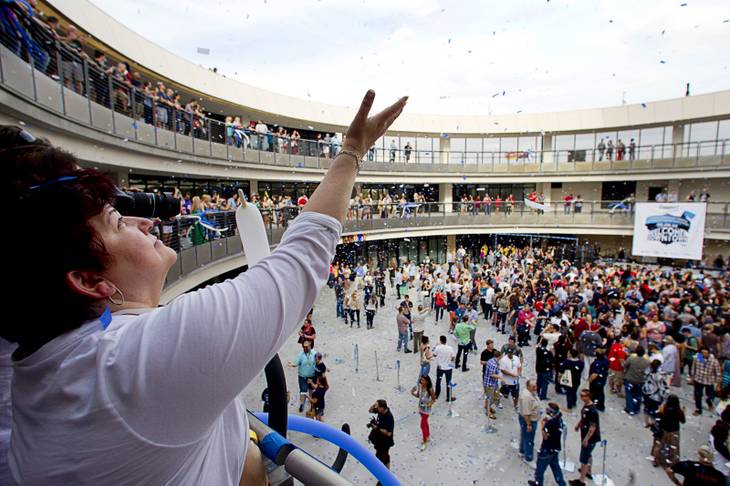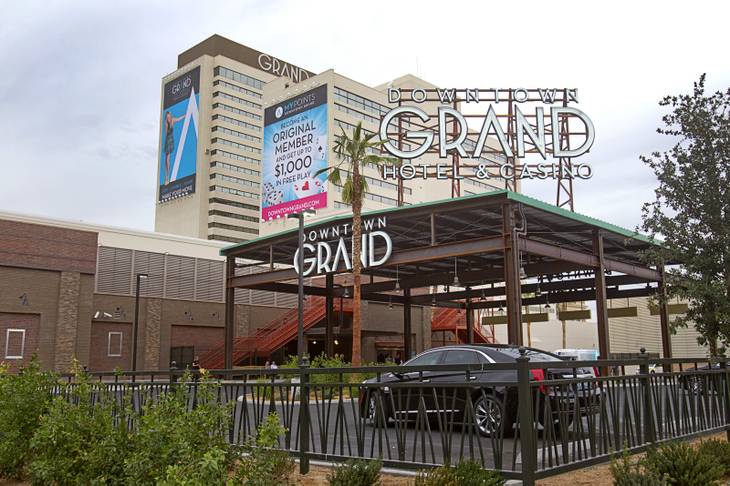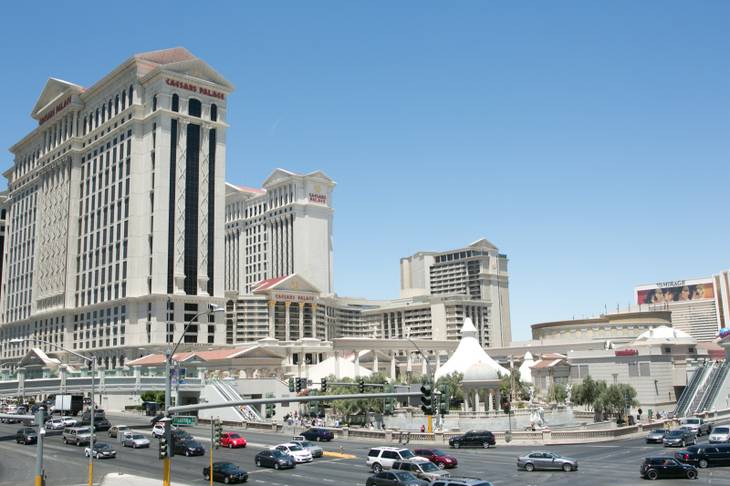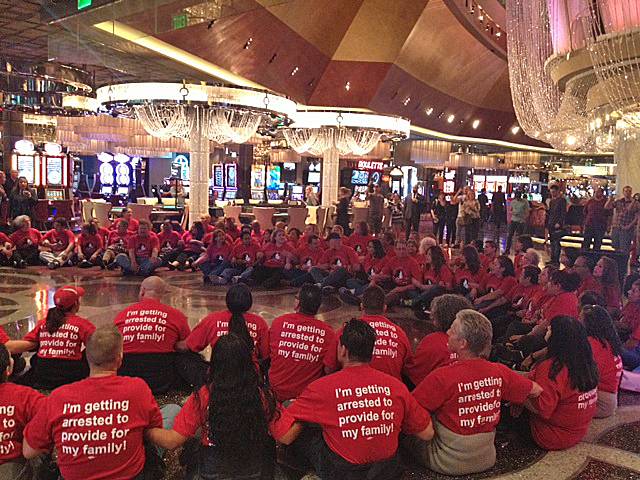A Strip giant struggled with finances, while a long-stalled resort project got new life.
A favorite local eatery faced its greatest challenge, while new restaurants downtown broke ground.
The real estate market boomed, while high-priced transportation projects stalled.
2013 was nothing if not eventful.
Here is a look at some of the top business stories of the year:
-

Resorts World Las Vegas
There appears to be new hope for the site of the planned Echelon.
Years after the recession derailed Boyd Gaming’s plans to build a resort at the site of the former Stardust, a Malaysian gaming powerhouse announced plans to build a 3,500-room Chinese-themed resort there with a 175,000-square-foot casino.
The Genting Group expects to spend $2 billion to $7 billion on Resorts World Las Vegas.
Boyd had begun building the Echelon, which was to be a $4 billion, four-hotel, 5,300-room resort similar to MGM’s CityCenter, but plans stalled when the economy derailed. The project sat mothballed for several years. Boyd sold the 87-acre site to Genting for $350 million in March.
Genting plans to go all out on the project, erecting a replica of the Great Wall of China and building a public display for pandas.
Construction crews are expected to break ground in 2014, and official say the resort will open in 2016.
Based in Kuala Lumpur, Genting owns casinos in Malaysia, the Philippines, the United Kingdom and the Bahamas. In Singapore, it operates Resorts World Sentosa, one of two casinos approved by the country’s government.
Because Genting is not licensed in Nevada, the company will have to apply with state gaming regulators, a process that could take more than a year.
-
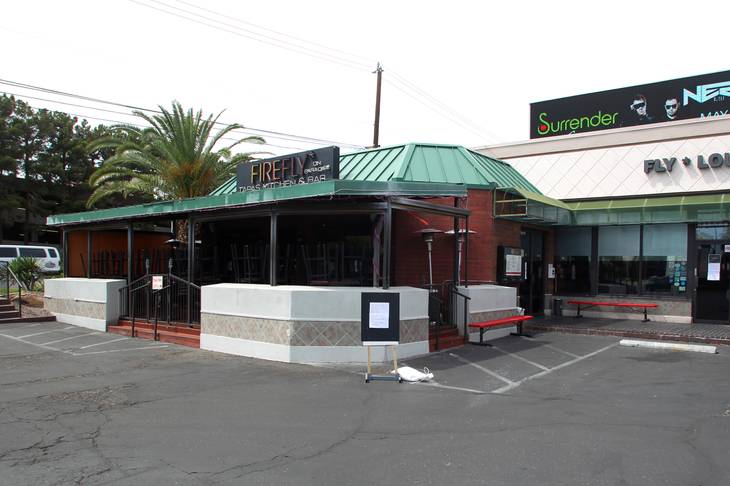
Firefly’s salmonella outbreak
A simple meal out at Firefly Tapas Kitchen, one of the valley’s most popular restaurants, ended this spring with almost 300 people sick from salmonella poisoning.
Southern Nevada Health District officials later named the culprit cooked chorizo, used in many of the restaurant’s most popular dishes.
At least 294 people from 27 states and two foreign countries became infected. Scientists determined the virus likely originated inside the kitchen.
While many of the people who were sickened lined up to sue the restaurant, health department officials forced Firefly to close after finding 44 health code violations. Inspectors said kitchen employees handled food with bare, unwashed hands and stored ingredients, including meat, at improper temperatures. They also found a thermometer that read 100 degrees despite being submerged in ice water.
A health district epidemiologist called the outbreak the largest she’d seen in more than 10 years of fieldwork.
Firefly has since reopened.
-
Downtown redevelopment
So much happened downtown this year, it was hard to keep track of it all.
The Downtown Project bought the Gold Spike in April, closed it down and reopened it three weeks later as a bar/restaurant with no gambling or smoking. The hotel rooms also were converted to apartments.
Zappos moved into its new headquarters in old City Hall in October, bringing 1,500 employees downtown from Henderson. The same month, the Life is Beautiful festival kicked off, attracting tens of thousands of people to the city’s inner core.
Slotzilla began to rise from the ground, offering an even longer Fremont Street Experience zipline, and the Lady Luck transformed into the Downtown Grand.
It’s no surprise that much of the development is the handiwork of the Downtown Project, which with the help of Tony Hsieh, is investing $350 million to develop tech, small business, education, entertainment and real estate downtown.
But the changes didn’t come without some hiccups.
Krave, designed to be the world’s largest gay nightclub, closed after only a short time in business after the state slammed owners for tax problems.
Fremont Street also experienced growing pains as crowds took over the area after First Friday events. Many stakeholders complained about underage drinking, business owners feared violence, police set up barricades and numerous people were arrested.
-

Online gaming
In February, Nevada became the first state in the country to approve intrastate online gaming, and resort companies have lined up to get a piece of the action.
The first to offer online, for-money play was Station Casinos’ Ultimate Gaming, which dealt its first hand of poker April 20. Dozens of other companies have since applied for licenses to be site operators, technology providers or regulators. But only one company so far has stepped up to challenge Station.
Caesars Interactive, a subsidiary of Caesars Entertainment, launched its World Series of Poker website Sept. 19. Several competitors say they are close to launching as well.
Meanwhile, New Jersey began play within its borders last month. Delaware isn’t far behind.
Critics say there aren’t enough Nevada residents or visitors to make in-state online poker financially lucrative. Gov. Brian Sandoval hopes to enter online gaming compacts with other states to allow play across borders. He has begun negotiations with Delaware.
-
Caesars’ financial problems
With 44 resorts in 13 states and six countries, Caesars Entertainment is the big man on the global gaming campus. But the company also carries the highest debt among its competitors – $23.5 billion.
This year was particularly difficult for the gaming giant, which in October reported a third-quarter loss of $761.4 million.
The news came after the company severed ties with Suffolk Downs for a casino in Massachusetts. CEO Gary Loveman said he was “disappointed and angry” with how things shook out.
The company had invested close to $100 million in its Massachusetts bid and made little progress in paying down its debt. At the same time, it angered many customers by rolling out resort fees at many of its Las Vegas properties.
Caesars saved about $65 million in the third quarter when it refinanced Octavius Tower at Caesars Palace and its mixed-used Linq project. It raised another $200 million in a public equity offering, the largest since its initial public offering.
And all is not lost. Caesars staved off bankruptcy and launched a real-money poker website. Looking forward, the company hopes to generate $420 million in the fourth quarter by selling a golf course in Macau.
-
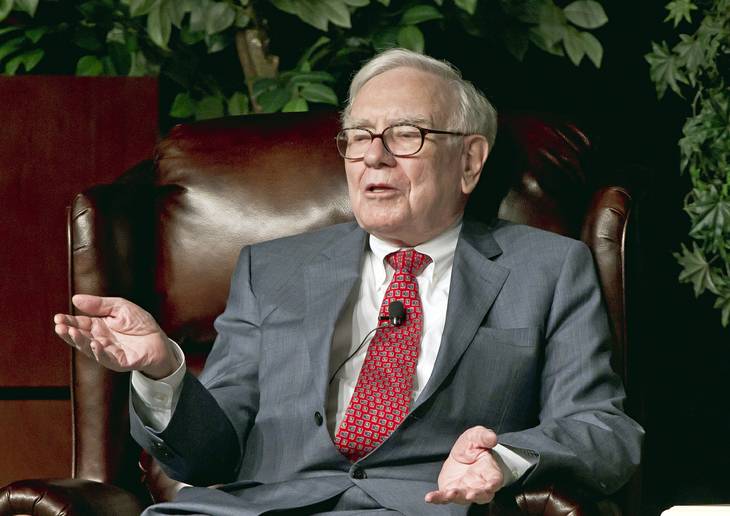
NV Energy sale
Investor Warren Buffett became one of the world’s wealthiest men by buying insurance providers, jewelry stores, underwear brands and aviation companies.
This year, he added another business to his corporate kingdom: NV Energy.
Buffett’s MidAmerican Energy Holdings Co. reached a deal in late May to buy Nevada’s primary electric utility for $5.6 billion cash. Including debt, the deal is valued at about $10 billion.
Investors cheered the news, sending NV Energy’s stock up 22.5 percent the day after the buyout was announced.
Customers likely will feel little impact from the sale, which is expected to close in the first quarter of 2014. Buffett, chairman and CEO of the Nebraska-based conglomerate Berkshire Hathaway, typically keeps executives in place at his subsidiaries. The same is expected for NV Energy.
But shareholders, including NV Energy’s top executive, are poised to reap a financial windfall from the deal. President and CEO Michael Yackira, one of the highest-paid executives in the valley, is expected to collect $21.2 million from the buyout, far more than NV Energy’s nine other board members, according to filings with the Securities and Exchange Commission. Board Chairman Philip Satre is expected to see a payout of $2.7 million; board member Glenn Christenson, a former Station Casinos executive, $2.5 million; and board member John O’Reilly, a local attorney, $2 million.
-

A new real estate boom
The valley’s real estate market has finally come back to life after collapsing during the recession.
In fact, prices soared so much this year that some real estate pros worried that another bubble was forming.
Sales prices for previously owned single-family homes rose 30 percent year-over-year, one of the fastest rates nationally. Prices for new homes climbed at a similar pace, while the price of vacant land in parts of the valley more than doubled during the first half of the year.
Some experts said the gains merely reflect Las Vegas’ recovery from a horrendous market. Others, however, were wary of what they saw as unsustainable price growth.
Last decade, Las Vegas’ doomed housing boom was fueled by rampant flipping and sloppy mortgage lending that let almost anyone buy vastly overpriced homes. These days, strong demand for a limited inventory of homes is pushing up prices.
Investors, many of them backed by Wall Street funds, have been buying cheap homes in bulk to turn into rentals. Availability also is limited by homeowners who refuse to sell or can’t sell because they’re underwater or stuck in foreclosure processing delays.
Prices climbed so high and so fast that some big investment firms started looking elsewhere for better real estate deals and pared down on local purchases.
-
Culinary Union vs. the Cosmopolitan
There’s the Eiffel Tower at Paris, the Fountains of Bellagio and the sea of red shirts outside the Cosmopolitan.
The red shirts belong to members of the Culinary Union, who over the past year have staged several protests outside the $4 billion resort.
Why? Because they want a contract.
Tensions mounted in March, when almost 100 members of the Culinary sat in the middle of Las Vegas Boulevard and let Metro Police arrest them. The civil disobedience represented a boiling point in a two-year saga of stalled contract negotiations between workers and the resort’s owner, Deutsche Bank. Union employees have been working at the Cosmopolitan without a contract for two years.
Culinary members eventually promised to hold weekly protests outside the resort, picketing every weekend. On Nov. 1, 120 members sat in the middle of the Cosmopolitan’s casino floor, waiting for police to escort them off the property in zip ties.
The union also launched CulinaryConfidential.org, a hotel review blog intended to tarnish the Cosmopolitan’s reputation.
Insiders say Deutsche Bank would rather sell the resort than negotiate with the union.
-
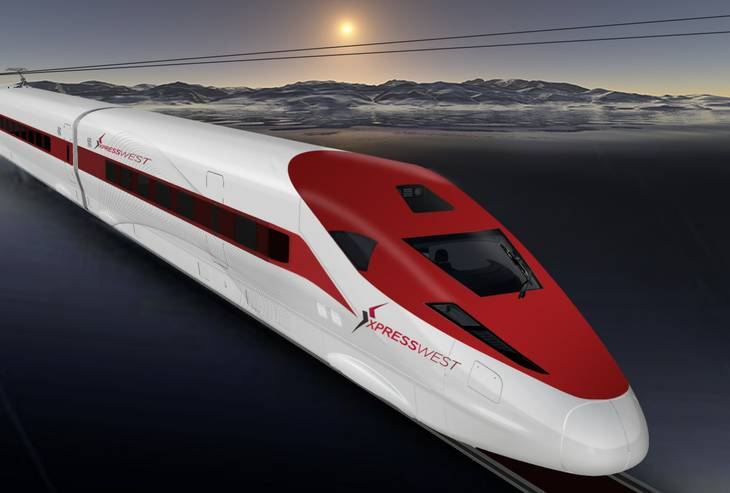
Train projects delayed
This was a bad year for rail transportation in Southern Nevada. Two highly-anticipated projects endured major setbacks, but backers of both XpressWest and the Las Vegas Railway Express X Train insist their plans aren’t derailed.
XpressWest, the $5.5 billion high-speed train that would link Las Vegas with Southern California, is mired in bureaucratic red tape and a political quagmire. The Federal Railway Administration doubts that ridership would produce enough revenue to pay off a federal loan to fund the project, and two congressmen have demanded that the loan be denied.
XpressWest spent hundreds of thousands of dollars devising a route along Interstate 15 and getting environmental approvals in anticipation of building 185 miles of track designed to carry trains at up to 150 mph. But its loan has yet to be approved.
Meanwhile, the X Train, a party train designed to run from Fullerton, Calif., to Las Vegas, hit a bump in its bid to begin operations in early 2014.
Las Vegas Railway Express CEO Michael Barron’s plans to build a train station at the Plaza fell through, and critics ripped his proposal to lease land for a station in North Las Vegas.
When Barron announced plans to seek a public-private partnership to help pay for the train, media reports declared the project dead.
Barron called the reports untrue. He said the delays have merely set the project back 18 months.
-
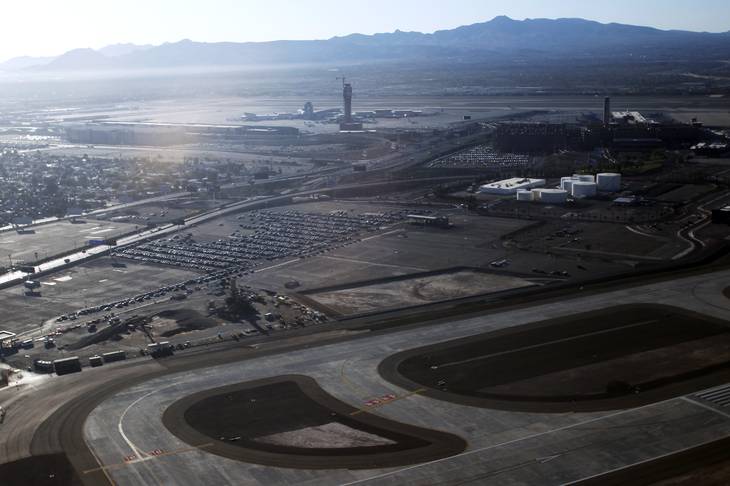
Economic development
Las Vegas is famous for hosting world-class boxing matches and entertainment, but is it a global business hub?
Local leaders certainly are trying to position it that way.
Economic development took a front seat in 2013 as officials planned a refurbished convention center and revamped development agencies.
The Las Vegas Convention and Visitors Authority delivered details of a planned new Las Vegas Global Business District, a $2.5 billion facelift of the Las Vegas Convention Center that will add meeting rooms, a conference facility, a World Trade Center and multimodal transportation hub. The project is expected to take eight to 10 years to complete.
The Nevada Development Authority rebranded itself as the Las Vegas Global Economic Alliance in a bid to attract both domestic and foreign businesses to Southern Nevada.
And community development offices pledged a new spirit of collegiality to work together to attract local industry and investment. The Las Vegas and North Las Vegas chambers of commerce merged and pledged to work in tandem with the LVGEA and Governor’s Office of Economic Development.
On the tourism side, officials with McCarran International Airport and the LVCVA met with dozens of airline executives in October to try to attract more flights to Las Vegas, particularly from overseas. Local tourism leaders schmoozed with airline decision-makers who decide where planes fly.
The results of the efforts won’t be seen for months, but leaders are optimistic they’ll get additional international lift to accommodate the global business they’re wooing.
